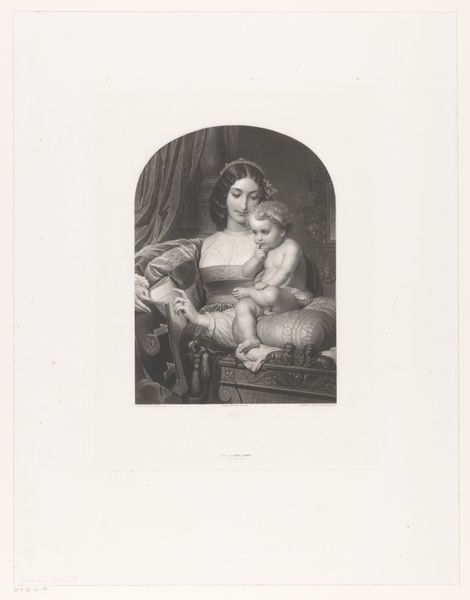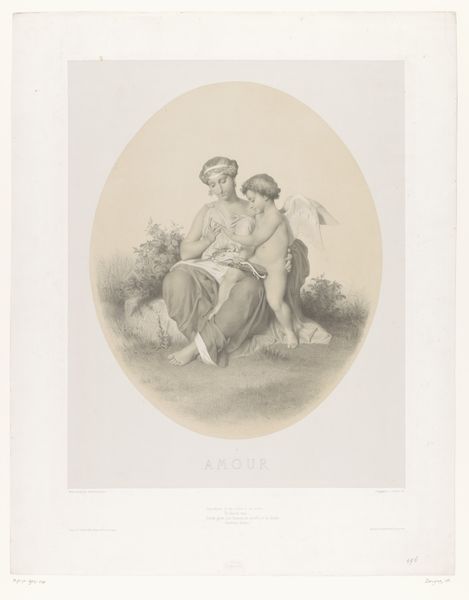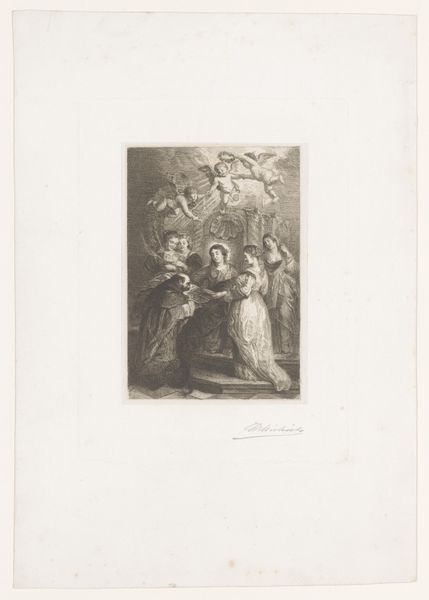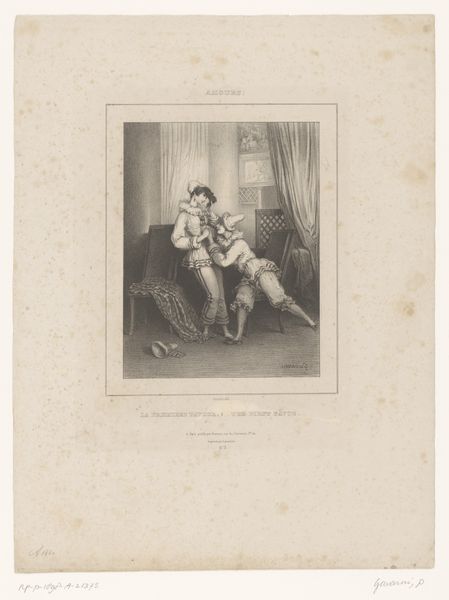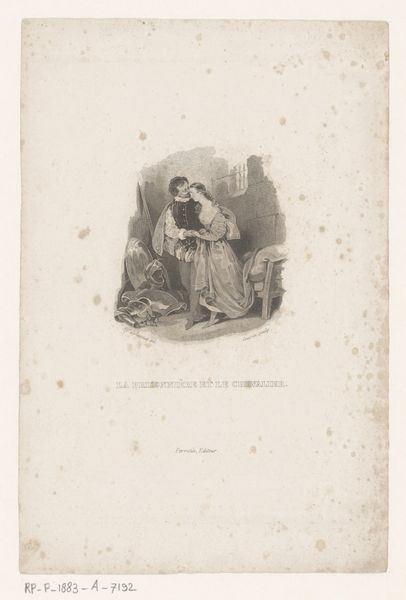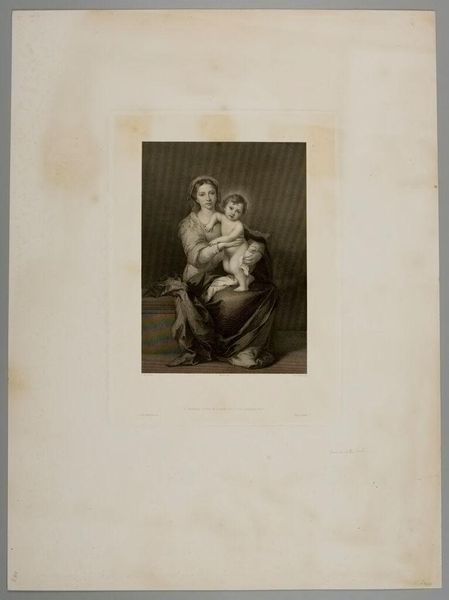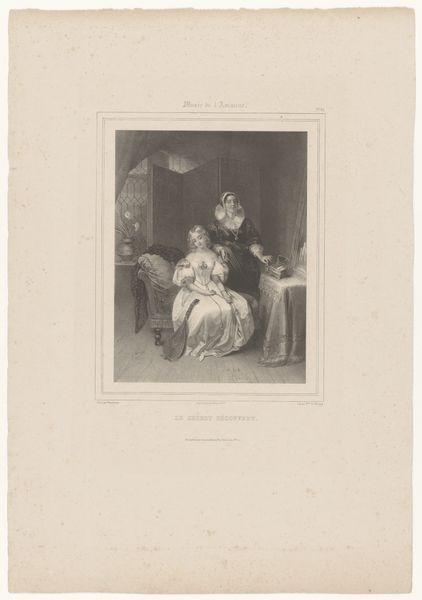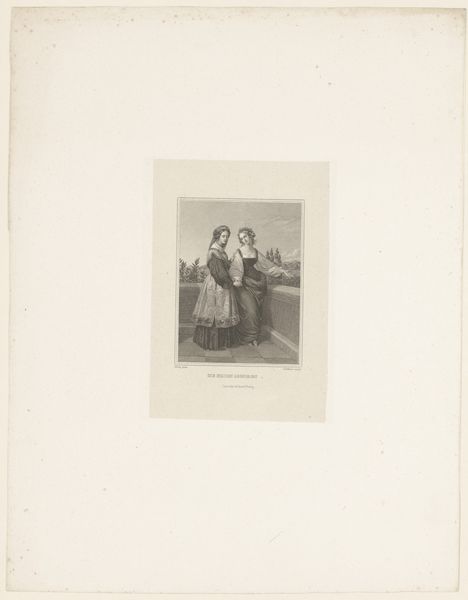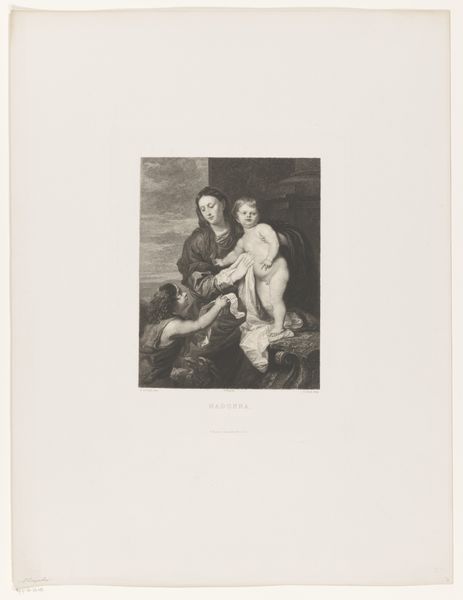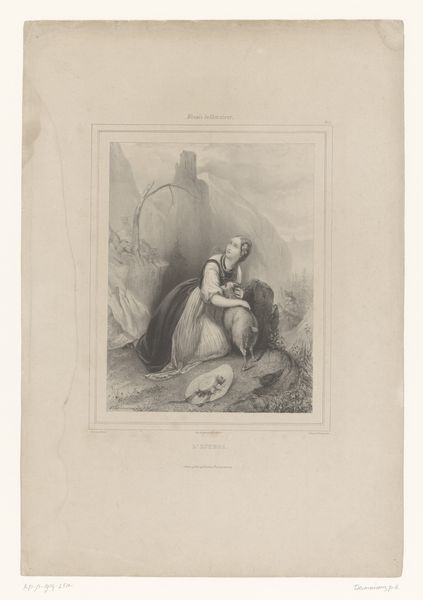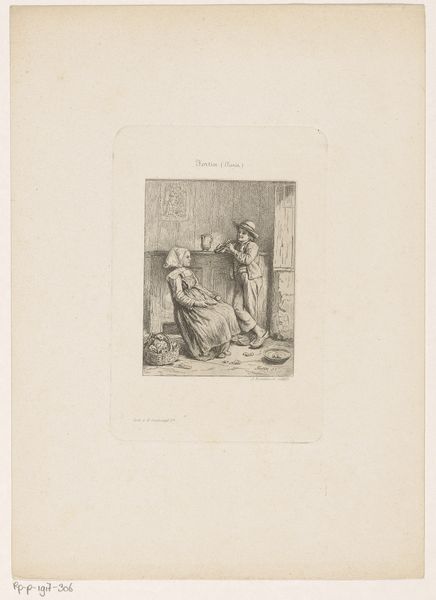
lithograph, print, engraving
#
portrait
#
lithograph
# print
#
figuration
#
italian-renaissance
#
engraving
Dimensions: height 362 mm, width 275 mm
Copyright: Rijks Museum: Open Domain
Curator: This is "Maria met kind," or "Mary with Child," a lithograph made around 1847 by Franciscus Bernardus Waanders. It's currently held here at the Rijksmuseum. Editor: My initial reaction is one of serene, idealized beauty. The soft gradients in the lithograph technique gives the subjects an almost ethereal quality, like they are floating on a cloud. It's striking how much detail the artist got into their clothing and even their facial features through the subtle shifts in shade and pressure of the printmaking process. Curator: Yes, the medium definitely influences our reading. Lithography, and printmaking more broadly, democratized images of religious icons. Consider the role the print plays here; it makes this traditionally aristocratic or ecclesiastical imagery far more accessible. Its visual language deliberately evokes the Italian Renaissance masters. Editor: Exactly. Looking at this piece, I keep thinking about the labor involved in creating this image and reproducing it. Each print is the result of Waanders carefully working with the stone and the press. Do we know anything about the size of the edition and where these would have been distributed? It really impacts the social function this image served, as did, certainly, the economics of production for its marketability. Curator: Unfortunately, the specific details on production volume and distribution for Waanders's prints are difficult to pinpoint with certainty. However, given the relatively lower cost of lithography compared to painting or sculpture, it's fair to assume they circulated amongst a broader middle class. Editor: What a compelling case study in the dissemination of imagery, made possible by the materials and process. Thinking about it, the Italian Renaissance painting is an aesthetic ideal for many consumers of art. It adds a layer to our understanding of both historical modes of seeing and this picture's modern setting of devotional, or, perhaps even, aesthetic value. Curator: And what's really interesting here is that the print's reproductive capabilities alter how we perceive both the sitter and the societal structure in relation to Waanders. The very act of taking an oil and transforming it into a print gives this lithograph its symbolic value. It turns it into an icon that, through this artwork, takes on a role that shifts the original symbolic purposes, allowing a larger group to enjoy a depiction such as "Maria met kind". Editor: Absolutely. Considering how Waanders was trained and by whom gives even further clues, and it highlights how it has transformed into its own statement through process. It emphasizes both devotional and political power. Curator: A valuable insight, indeed. Hopefully our listeners will contemplate how even an ostensibly simple print can be so richly layered. Editor: Hopefully! Seeing and reflecting is a social project. It has been great.
Comments
No comments
Be the first to comment and join the conversation on the ultimate creative platform.
